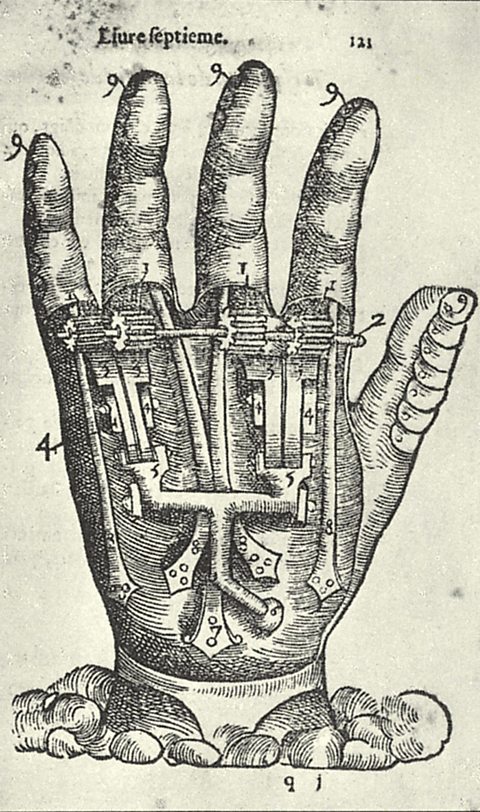Ambroise Par├®
- Ambroise Par├® was born in France in 1510.
- He was a surgeon to French kings and worked as a barber surgeon in the French army.
- He made key contributions to the development of medicine, particularly in surgery.
Par├®'s ointment
When treating gunshot wounds, the traditional method was to use hot oil to cauteriseThe burning, searing or freezing of tissue to close a wound. wounds. Par├® used this method until, one day, he ran out of oil. He remembered reading about an old remedy that used egg yolk, rose oil and turpentine. He treated his remaining patents with this ointment.
That night, Par├® was worried the soldiers he had treated with the ointment would die, so he went to check on them. He found the patients who had been treated with the hot oil were in significant pain. However, those who had been treated with the ointment were sleeping and their wounds were healing.
Par├® had by chance discovered a more effective treatment for treating gunshot wounds. However, as he did not know about germs, he was unaware of how or why the ointment worked.
Par├®, ligatures and artificial limbs

If patients had severe wounds or had a limb amputationThe removal of a limb, for example an arm or leg. blood vessels were sealed by cauterising them. This sometimes caused patients to die from the pain or from infections in the wound cauterisation caused.
Par├® used ligaturesThreads used to tie blood vessels. to tie blood vessels and stop bleeding. This was effective in stopping blood loss but did not necessarily reduce the death rate.
Par├® did not know about germ theory, so surgeonsŌĆÖ hands and the ligatures were often unclean. This meant there was a high chance of infection and death.
As he was an army surgeon, Par├® treated many amputeeSomeone who is missing one or more limbs, either through injury or birth. This encouraged him to design various examples of artificial limbs.
Why was Par├® significant?
In the short term, Par├® showed that new methods, such as his ointment, could be more successful than ideas that had been followed for centuries. He wrote about his ideas in several books, including Treatise on Surgery in 1564.
In the longer term, ligatures would be useful. However, fully implementing them required the discovery of germ theory (by Louis Pasteur) and carbolic acid (by Joseph Lister). This allowed ligatures to be properly steriliseTo kill any living organisms, usually microbes that might cause disease, on an object or in a substance. and used with a lower risk of infection.
Question
What factors helped Par├® to make his discoveries?
▒╩▓╣░∙├®ŌĆÖs work was helped by several factors:
- War gave him the opportunity to try his ointment and consider artificial limbs.
- ▒╩▓╣░∙├®ŌĆÖs ointment was tried by chance, as if he had not run out of hot oil, he would not have had the opportunity to try the ointment.